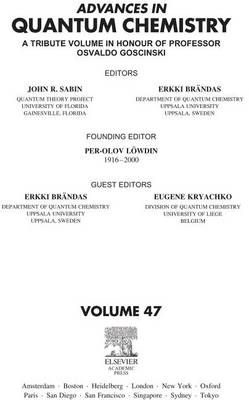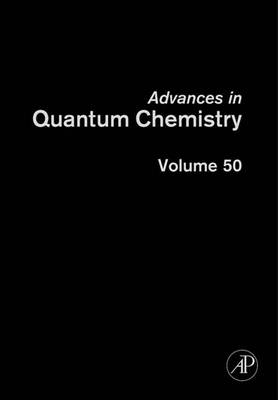Advances in Quantum Chemistry
2 total works
Advances in Quantum Chemistry presents surveys of current developments in this rapidly developing field that falls between the historically established areas of mathematics, physics, and chemistry. With invited reviews written by leading international researchers, as well as regular thematic issues, each volume presents new results and provides a single vehicle for following progress in this interdisciplinary area.
Volume 47 is a tribute in honor of Professor Osvaldo Goscinski. The volume will look at the accomplishments of a man who has led a remarkable development within the field and developed and strengthened scientific networks in Quantum Chemistry and Chemical Physics.
Volume 47 is a tribute in honor of Professor Osvaldo Goscinski. The volume will look at the accomplishments of a man who has led a remarkable development within the field and developed and strengthened scientific networks in Quantum Chemistry and Chemical Physics.
Response Theory and Molecular Properties
by Jan Linderberg, Poul Jorgensen, John R Sabin, Erkki Brandas, and Jensen
Published 20 December 2005
Advances in Quantum Chemistry presents surveys of current developments in this rapidly developing field that falls between the historically established areas of mathematics, physics, chemistry, and biology. With invited reviews written by leading international researchers, each presenting new results, it provides a single vehicle for following progress in this interdisciplinary area. This volume continues the tradition with high quality and thorough reviews of various aspects of quantum chemistry. It contains a variety of topics on the use of quantum mechanical methods to calculate molecular properties including response properties. Linear and non-linear response methods have been developed and implemented for most of the approximate wave functions used in quantum chemistry, giving a range of computational methods of varying cost and accuracy. Thus it is presently possible to calculate for example excitation energies, linear and nonlinear optical properties, one- and multi-photon transition rates, and magnetically induced transition moments for a wide range of molecules and target accuracies. These calculations aid in the interpretation of a wide range of spectroscopy including electron spin resonance, nuclear magnetic resonance and magnetic circular dichroism and general laser spectroscopy.

